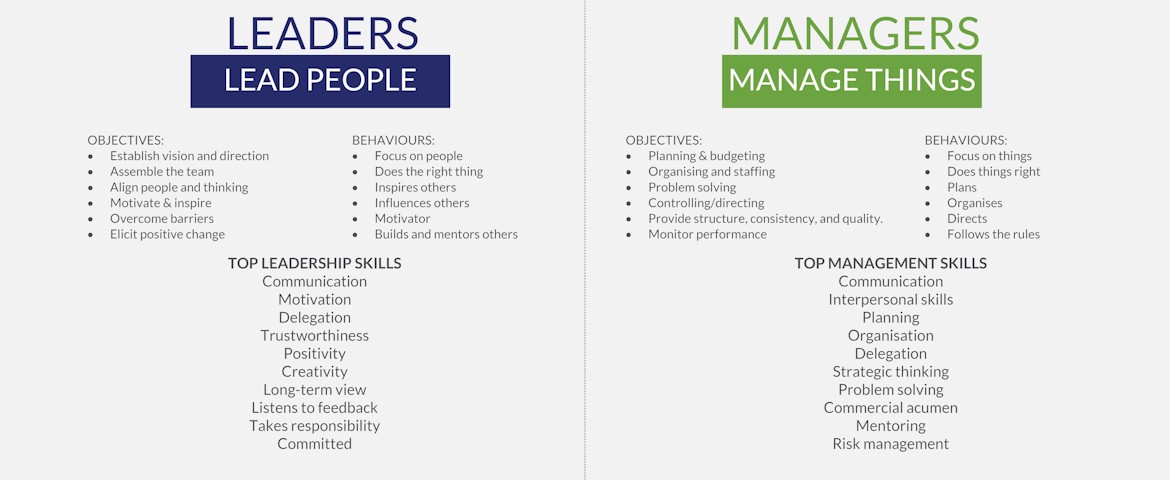It’s impossible to become an effective leader without self-awareness. Every leader possesses a unique set of attributes that helps them develop their own style. But equally every leader, no matter how seasoned, has weaknesses. Learning how to improve self-awareness is critical in understanding how we come across to others.
What is self-awareness?
Self-awareness is defined as the ability to be mindfully aware of your motivations, fears, insecurities, beliefs and thinking. Leaders who are self-aware are conscious of their strengths and weaknesses. This helps with identifying what to focus on improving. It means being more realistic about yourself and understanding how others perceive you.
If you see the following traits in yourself, you may need to work on becoming more self-aware:
1. You find yourself micro-managing others
The desire to micro-manage usually stems from a lack of trust. Perhaps you don’t think others will do it as well as you, or to a certain standard.
2. You avoid taking blame
It may be common for you to become defensive or dismissive when something goes wrong.
3. You’re often anxious and stressed
Stress is normal in life, but an inability to pinpoint the underlying cause may be caused by low self-awareness.
4. You indulge in passive-agressive behaviour
Critical barbs directed at others simply because they disagree with you, or you dislike them, may stem a defensive mechanism or insecurity.
By becoming more self-aware, we can play to our strengths while identifying weaknesses as developmental opportunities rather than something to feel bad about.
[To learn more about what motivates us as humans, see our related article]
Benefits of becoming more self-aware
1. Improved response to stress
Self-awareness helps you identify stress triggers, meaning you’re able to modulate your reaction. Rather than have a knee-jerk reactions to adverse situations, you take a breath first. You know what to do to reduce your stress levels. A leader who learns how to improve self awareness is less susceptible to burnout.
[To learn more about building resilience to reduce stress, see our related article]
2. Better Time Management
By becoming more aware of when and how you work best, you can manage your time better. Some of us are morning people, and some of us definitely aren’t. Understanding what works best for you means you can better plan when to fit in complex tasks into your day.
[To learn more about improving time management skills, see our related article]
3. Grow empathy and understanding
Self-awareness helps you understand the impact of your emotions on others. We’re only human, and it’s natural to experience stress or frustration at work. As we become more self-aware, we understand how negative emotions affects others. By also observing these behaviours in others, we can adjust our response rather than simply reacting. This means you’re more able to control your emotions. It allows you to better remain professional, and not take things personally.
Common impediments to growth
Self-awareness not only improves your relationship with your team, but a positive impact on company performance. However, it is common to feel that the pace of life leaves gives us little time to reflect on ourselves.
The process of learning how to improve self awareness can be impeded by fear of self-discovery. An unwillingness to break away from old habits, or the tendency to be comfortable with the status-quo.
Tips for becoming more self-aware
So, developing self-awareness requires consistent effort, commitment and time. But like any personal development, it is an investment. Let’s look at some effective self-awareness tips.
1. Reflection
Learning from past experiences and failures is the best way to gain insights about yourself. Analyse past incidents calmly and ask yourself the reason you may have reacted in a specific manner. While framing the reason for the reaction or emotion, write down how you wished you’d responded. For example, you may be pondering on why you snapped at your team member during a meeting. Was it because you were tired? Were you stressed about an upcoming performance review? Do you harbour an irrational dislike towards the individual?
2. Identify your strengths and weaknesses (personal SWOT analysis)
To identify how to improve self awareness try doing a personal SWOT analysis. Write down your strengths, weaknesses, opportunities for improvement, and perceived threats. Consider asking yourself the following questions to discover your strengths and weaknesses:
> Things I’m good at?
> What have other people complimented me most about?
> Which skills or strengths have helped me achieve my goals?
> Where have I needed assistance?
> What projects and interactions seem to drain my energy?
> In which areas have I frequently encountered problems?
This form of self-analysis can prove to be challenging to do. We may not ask the right questions, or internal mental blocks may prevent us from acknowledging the truth.
3. Psychometric Tests
Additionally, psychometric tests and analysis are logical, scientific ways to understand your strengths, weaknesses, core traits and preferences. They help evaluate yourself and illustrate your areas of strengths and developmental opportunities.
A psychometric test will also reveal your emotional drivers, basic behaviour, conflicts and communication abilities. Professional self-awareness workshops go a long way in helping you explore your inner self.
4. Seek feedback from those you trust
Also important is getting a different opinion. Request your peers, mentors and team their perspective into your personality. When you do this, ensure that you adopt a willing attitude without the need for self-justification or defensiveness. An open-minded approach will help you gain useful insights about how you appear to others.
Final thoughts
Self-awareness skills help leaders understand their strengths and vulnerabilities and what truly motivates their actions. Leaning into your strengths while working on weaknesses will help you learn and adapt new strategies. This is key for your own personal growth as a leader, and enables you to develop a style all your own to achieve the best outcomes. A self-aware leader is simply more effective. They can quickly assess and regulate their own behaviour to suit the situation, in an honest and mindful way.










